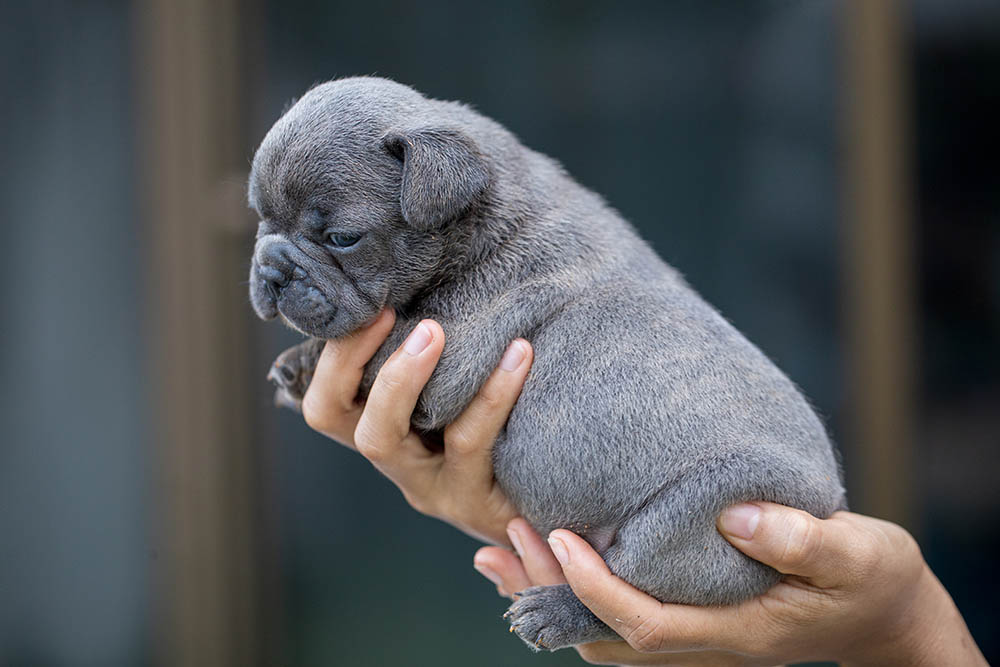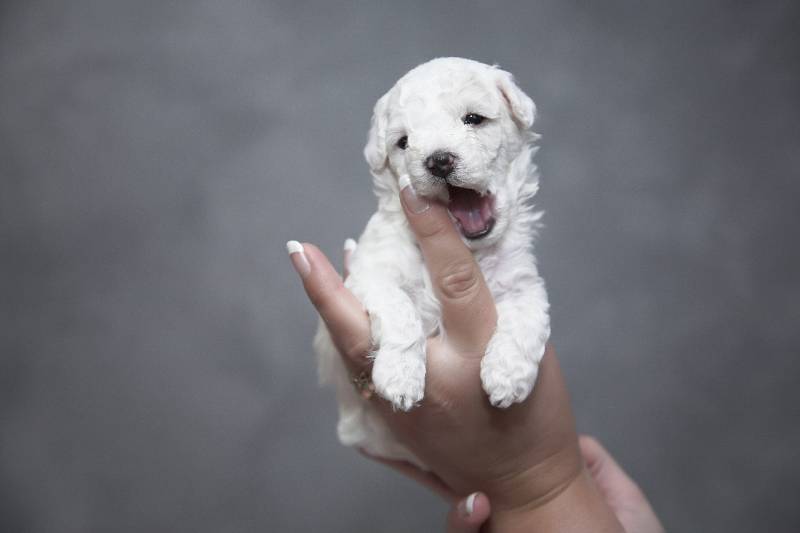Choosing the correct puppy from a litter can seem like a huge decision. After all, what happens if you don’t choose the right one? However, this decision likely isn’t as big as many owners think. Many of the dogs in a litter are very similar. They do share the same genes, after all. Plus, how you raise your puppy is just as important as their genetics.
Still, you don’t want to choose an unhealthy puppy or one with temperamental issues. Therefore, there are some things you should keep in mind when choosing a puppy.

How to Choose a Puppy from a Litter
1. Ask the Important Questions

Before you consider choosing a puppy from a specific litter, there is a lot of background research you need to do. Much of this involves asking the breeder questions and perhaps digging into the breeder’s reviews. Ask about the puppy’s health. Has the puppy been vaccinated? Can you see the puppy’s vet record?
Quality breeders will start the puppy’s vaccinations before sending them to their forever homes. Plus, many experts recommend treating puppies for intestinal parasites, too.
You should also ask about what the puppy is eating. All puppies should be well adapted to solid food before being separated from their mother. However, some breeders may attempt to sell puppies sooner for their own benefit. Ensure the breeder you’re working with doesn’t fall into that category.
2. Watch the Litter Interact

When you first meet a litter of puppies, you should observe how the puppies interact, first. The puppies should seem playful and healthy. However, there will likely be some quiet puppies in the bunch. This is fine and doesn’t necessarily mean that there is anything wrong with the quieter puppies. However, it can indicate personality differences you may want to keep in mind.
Furthermore, you should also look at the litter’s health as a whole. The play area should be relatively clean (though puppies can be dirty, so it doesn’t have to be spotless). However, there should not be a smell, and the puppies should have healthy coats. It’s important to keep their coat in mind, as it is one of the easiest ways to determine health at a glance.
None of the puppies should limp or have a hard time getting around. Puppies tend to be clumsy, but they shouldn’t have any issues running and playing.
3. Observe the Individual Puppy

Once you’ve narrowed it down to a couple of puppies, you need to look closely at their appearance. You should separate the puppy from its littermates (which could just involve picking it up). His eyes shouldn’t have any drainage or redness. They should be bright and clear, without hair loss around the eye.
The ears shouldn’t have an odor (which can indicate infection). The ear flaps should have healthy hair along the outside. Puppies that scratch or shake their ears a lot may have ear infections.
Take a look at the puppy’s nose. It does not need to be wet, however, it shouldn’t have any discharge. You shouldn’t be able to “hear” the puppy breathing in a raspy manner. The head overall should be without skin issues or bald patches. Puppies have a soft spot on the top of their head, which is normal.
A puppy’s gums and teeth should appear normal. The gums should be bright and pink without serious changes in coloration. The teeth should be white. All of the teeth should be there unless you’re adopting an older puppy. Puppies do lose their milk teeth just like humans do.
The puppy’s teeth should align closely. Even in breeds with an under-bite, it is recommended to choose animals with less of an under-bite to prevent potential dental issues in the future. Many breeders may use the breed standard of an underbite to sell unhealthy puppies, so keep a close eye out for this.
A dog’s skin and coat are easy to check for overall health, though it isn’t fool-proof. If a dog’s coat is patchy or there is flaking of the skin, it could indicate an underlying problem. This isn’t always the breeder’s fault. Some puppies may have allergies, for instance. However, it is something to keep in mind if you’re considering that puppy.
What About Personality?

We’ve talked a lot about a choose a healthy puppy in the tips above. However, we haven’t discussed temperament at all. This is because it is challenging to determine temperament at such an early age. Just like humans, dogs will develop their temperament over many years. It isn’t something innate and unchangeable.
How you raise your puppy is important. Training and socialization are required, even if you choose the perfect puppy initially. Therefore, what you do with the puppy after adopting it is far more important than which puppy you choose.
Furthermore, if you’ve already narrowed it down to a specific litter, then the difference between puppies will be very small. The best way to determine a puppy’s personality is to check the mother. However, since all the puppies in the litter will have the same mother, this fact won’t help you choose between specific puppies.
You may be able to get some idea of what a puppy will act like by watching them interact with their littermates. Some dogs may be more playful and outgoing, while others may be more docile. However, how a puppy interacts with its littermates may have little to do with how they’ll act a year or so down the road. A dog’s personality can change a lot once they hit the 1 and 2-year mark.
Therefore, there isn’t a reason to “check” a dog’s personality before adopting it. You can do nothing at this young age to determine how the dog may act later. Many websites have “tests” to perform on puppies to ensure they will behave later. However, as we’ve said, how you raise the puppy is far more important than how they act when this young.
Conclusion
You should check several things before adopting a puppy to ensure they are healthy. While these health tests aren’t fool-proof, they will reveal obvious problems. We also recommend taking your puppy to the vet shortly after adoption. Not only will the dog need vaccinations, but the vet can also check for underlying health problems.
Sadly, there is no way to check the temperament of a young puppy. Dogs change a lot over the first few years of life. A docile puppy may become outgoing in a few months. Therefore, don’t stress about performing all sorts of temperament checks on a puppy. In the end, they don’t mean much.
Instead, your energy would be better spent researching how to raise a puppy. Early training and socialization are vital to having a well-adjusted dog.
See Also:
- 7 Possible Issues With Adopting Two Puppies at the Same Time (What You Need To Know)
- How Often Would People Choose Their Pets Over Their Partners?
Featured Image Credit: Jumpstory












